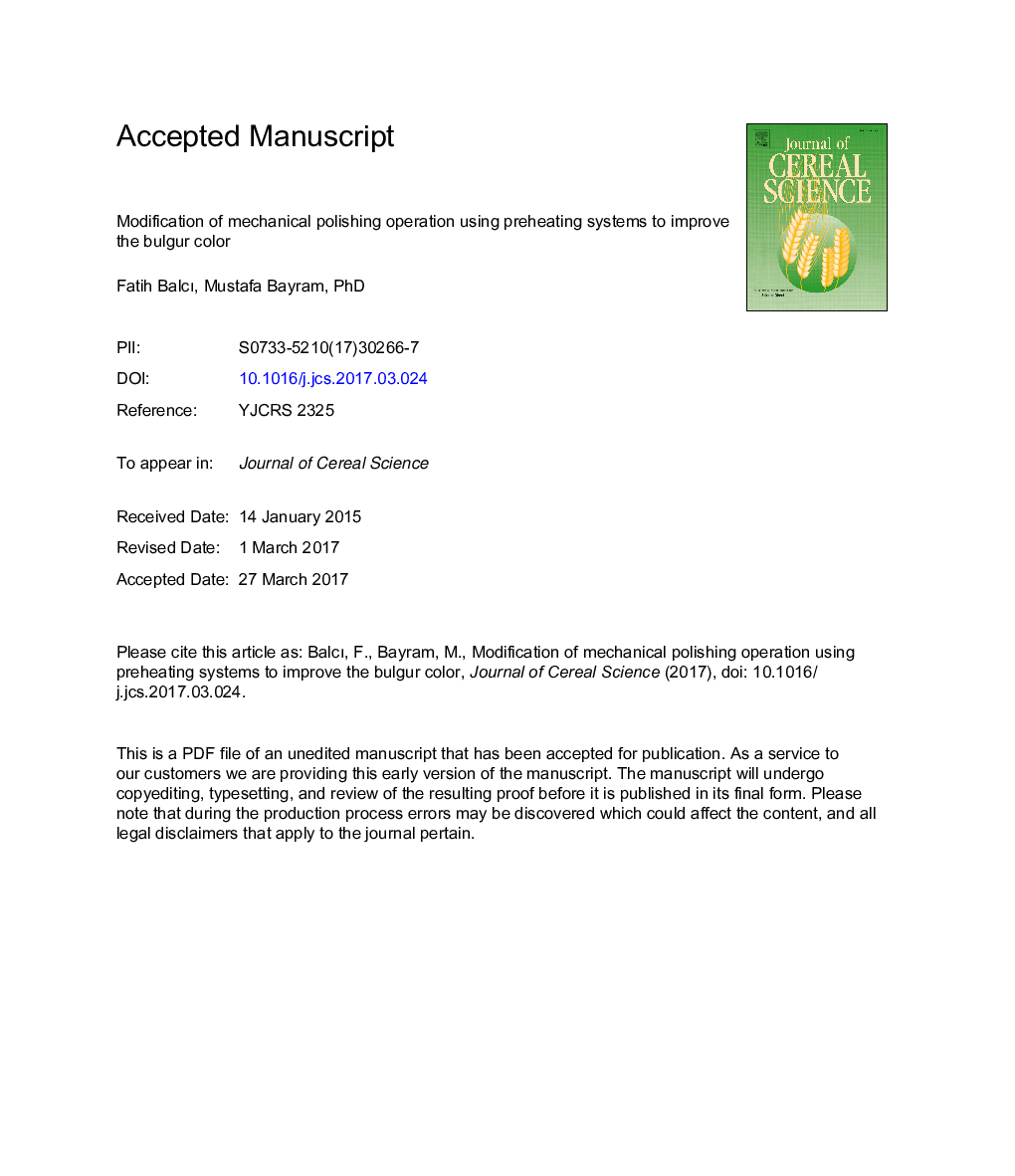| Article ID | Journal | Published Year | Pages | File Type |
|---|---|---|---|---|
| 5762361 | Journal of Cereal Science | 2017 | 29 Pages |
Abstract
Bulgur is an increasingly popular foodstuff that has existed since antiquity, and one that displays high consumption worldwide. Polishing is a key operation to improve the yellow color of bulgur which, by extension, also improves the competitiveness in business and markets. In this study, the traditional electrical heater-aided mechanical polishing system (EHA-MP) was modified with preheating systems so as to decrease the energy consumption and to improve the bulgur color. Additionally, it was investigated that the effects of the tempering methods (spray and steam) before polishing, the preheating (microwave and infrared, at 40, 60 and 80 °C) by determining changes in the bulgur color (CIE L*, CIE b*, CIE a*, CIE YI), total carotenoid content (TCC), chemical composition (moisture, ash and protein contents, %, d.b.) and the energy consumption of the process. Both tempering methods increased significantly (P â¤Â 0.05) the CIE L* and CIE b* values of bulgur. The temperature of polishing increased the TCC of bulgur significantly (P â¤Â 0.01). Infrared preheating was the most economical method according to energy consumption. Taken together, these new findings offer new insights and improvements in the bulgur production and its attendant business competitiveness and responds to demands by consumers.
Related Topics
Life Sciences
Agricultural and Biological Sciences
Agronomy and Crop Science
Authors
Fatih PhD, Mustafa PhD,
